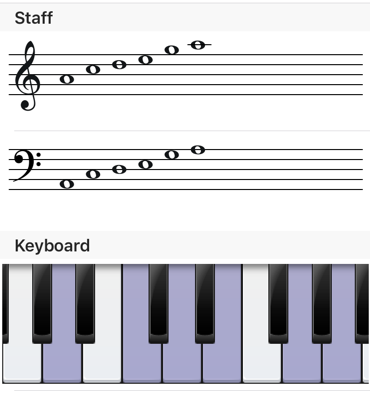Today we are talking about the four chords of pop! It is a four chord progression widely used in pop music through the years, and it has a natural attraction that leaves no indifferent listeners. Based in the previous Doo Wop progression we discussed before, it consists of a I – V – vi – IV sequence played in major mode.
Check out these popular songs that use the four chords of pop!
- Adele – “Someone Like You”
- Bruno Mars – “The Lazy Song”
- Imagine Dragons – “Demons”
- James Blunt – “You’re Beautiful”
- Journey – “Don’t Stop Believing”
- Men At Work – “Down Under”
- The Police – “So Lonely”
So the variety of the genres comprehended in this list will give you the idea of how used is this progression in a popular music context!
The Inside
How these simple chords work so well when put together? Let’s take a look at the musical techs that will answer that:
- Common Notes: The major part of the most catchy chord progressions we know share this particular aspect. As long as two chords with two or more common notes are put together, a well sounding effect will be achieved. Dividing the progression in two parts we get two common notes chords linked: I – V and VI – IV.
- Length: The duration of a chord progression is important when it comes to the song structure. Longer progressions will be used to punctuate a certain musical idea, which helps to the lyrics-music relationship. This particular progression of four chords is mostly used to express a single musical idea because of the amount of chords involved.
- Contrast: When putting a VI chord after a V chord, since they do not share any common notes, a surprising effect is achieved. The drastic change of moods when going from a major chord (V) to a minor chord placed just a degree above (VI) gives this progression a contrasting factor that engages the listener.
A Practical Example
We are reviewing Journey’s timeless classic Don’t Stop Believing for you to take a look at how this progression works and structures a song:
The first thing to do is to check out the key in which is it’s written: since the first chord is an E major chord and our progression starts at I (first degree), we will assume we are on E major key. Then we break said major key in its own chords and chord tones:
I – E major: E – G# – B
II – F# minor: F# – A – C#
III – G# minor: G# – B – D#
IV – A major: A – C# – E
V – B major: B – D# – F#
VI – C# minor: C# – E – G#
VII – D# minor: D# – F# – A#
After we do so, it is time to form a four-chords-of-pop progression with:
If you play this progression against Journey’s first verse you’ll see how perfectly it fits! Meaning Don’t Stop Believing first line – “She’s just a small town girl, living in a lonely world” makes use of four chords of pop to express a complete lyrical idea!
Now take a look at how common chord tones interact with each other:
Major key introduction:
I – V: E major and B major are sharing one common note – B note – and make the perfect point to establish the major key since it starts with the chord that gives it the name.
Contrasting turn:
V – VI: B major and C# minor doesn’t share any common notes. This will cause a contrasting and engaging effect on the listener. Since both chords are contained in E major key it won’t hurt the stability of the song.
Wrapping it up
VI – IV: The closing of the progression makes use of the two common notes sharing between these two chords. C# minor and A major shares both E and C# as their common notes! The subtle change of mood between them makes it a delightful closing.
Now it’s time to practice the effectiveness of this progression in your own songs and musical ideas! Remember to try all these progressions with all the major keys you can think of, so you get used to its sonority! See you next time, when we will talk about modulation – or ‘chord borrowing’, as you may heard it!


